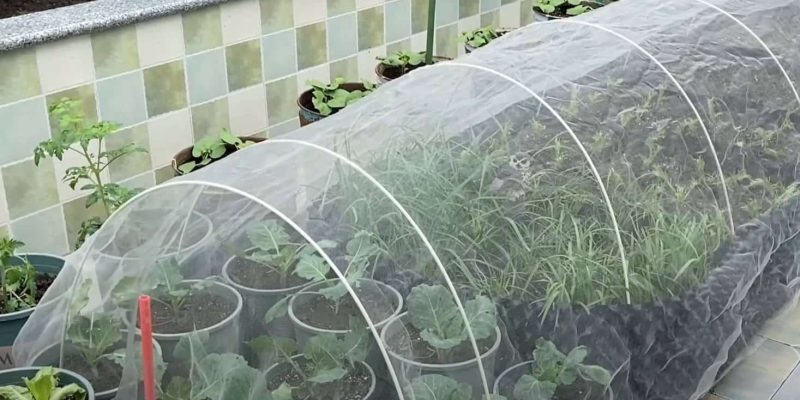Insect netting is a type of mesh material that is widely used to protect plants from insect pests. It is typically made from a fine, lightweight fabric that is woven from synthetic fibers such as polyethylene or polyester. Insect netting is used in a variety of horticultural and agricultural settings to protect crops and plants from insects that can cause damage or spread diseases.
READ MORE: Learn about anti-hail netting >
The netting is placed over plants or placed around them in a frame, creating a physical barrier that prevents insects from reaching the plants. Insect netting is also used to protect plants from larger animals such as birds and rabbits, or bad weather like hail. And it also combines the benefits of a sunshade net, which makes it an excellent choice for various applications, such as agriculture, horticulture, and residential use.
This post tells you 5 benefits of greenhouse insect netting and what you should consider when choosing insect netting for your plants.
The Benefits of Anti-Insect Netting
Anti-insect nets offer several important benefits when used in greenhouses.
1. Pest Control
Anti-insect netting is highly effective at reducing the incidence of pests in the greenhouse. Tests have shown that anti-insect nets can be highly effective at reducing the incidence of pests such as greenflies, small cabbage moths, bean pod borer moths, and American spot-winged flies by 94-97%, and aphids by 90%.
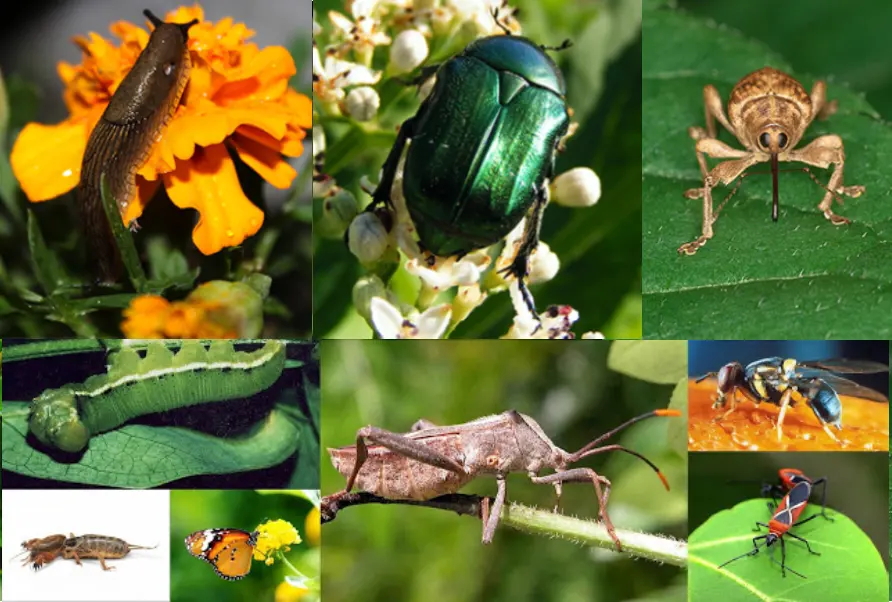
Anti Pests – Insect Netting
2. Disease Prevention
Anti-insect nets can also help to prevent the spread of viruses, which can have devastating consequences for greenhouse cultivation. Aphids are a common vector for viral diseases, but anti-insect nets can block the transmission path of these pests, greatly reducing the incidence of viral diseases in the greenhouse. The efficacy of anti-insect nets for disease prevention has been shown to be around 80%.
3. Temperature, Soil Temperature, and Humidity Regulation
Anti-insect nets can help to regulate the temperature, soil temperature, and humidity within the greenhouse, creating a more suitable growing environment for crops. In hot seasons, they can keep the temperature within the greenhouse the same as outdoors in the morning and evening, and slightly lower than outdoors on sunny days. In early spring, they can increase the temperature within the greenhouse by 1-2°C, and the soil temperature by 0.5-1°C, effectively preventing frost.
Anti-insect nets can also block some rainwater from entering the greenhouse, reducing field humidity and the incidence of disease, and decreasing the amount of water vapor that evaporates within the greenhouse on sunny days.
4. Shade Effect
Insect netting can provide shade, similar to greenhouse shade cloth. The shading effect of anti-insect nets can regulate light intensity, temperature, and humidity within a greenhouse, creating a more suitable growing environment for light-sensitive vegetables such as lettuce and spinach. This can help to ensure that these crops receive the optimal amount of light for healthy growth and development.
5. Other Benefits
In addition to their pest control, disease prevention, temperature regulation, and shade effect capabilities, anti-insect nets can also offer several other benefits. They can reduce the use of pesticides, save energy, and lower the overall cost of greenhouse cultivation. Overall, anti-insect nets are a valuable tool for maintaining healthy and productive greenhouses.
Things to Consider When Choosing Anti-Insect Netting for Plants
There are several factors to consider when selecting an anti-insect netting for use in a greenhouse.
1. The Types of Pests to be Prevented
It is important to consider the type of pests you are trying to prevent. For example, in the autumn season, many pests may try to enter the greenhouse, particularly moths and butterflies. These pests tend to have larger bodies, so a netting with a mesh count between 30-60 should be sufficient. On the other hand, if the primary concern is small pests like aphids and thrips, netting with a higher mesh count of 60 or above may be more appropriate.
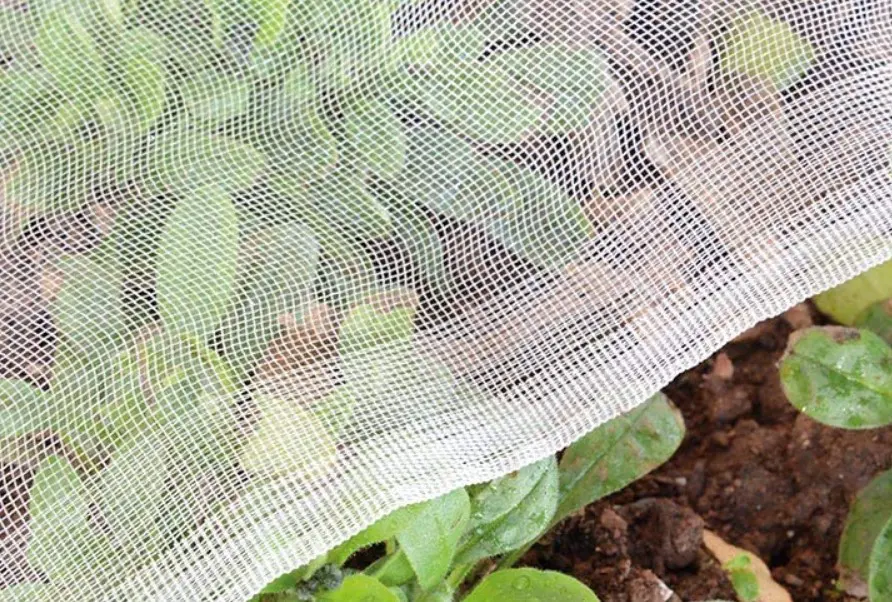
40 mesh anti-insect netting
2. The Size and Shape of the Greenhouse
The size and shape of the greenhouse will also impact the type of anti-insect netting that is most suitable. For example, if the greenhouse has a large surface area and high ceilings, netting with a higher tensile strength may be necessary to ensure its stability and durability. Similarly, if the greenhouse has an irregular shape, custom-made netting may be required to ensure proper coverage and protection.
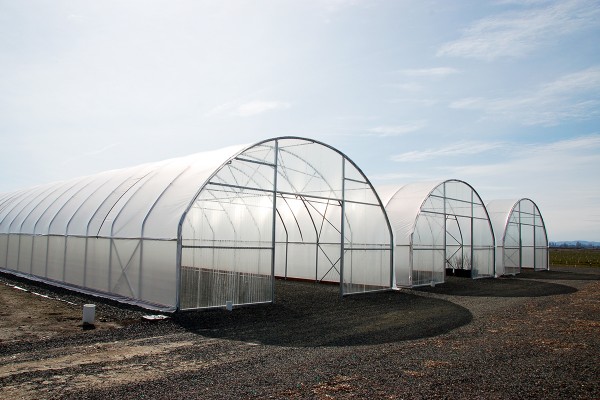
Choose insect netting based on greenhouse
3. The Type of Crops Being Grown
The type of crops being grown will also influence the selection of anti-insect netting. Some crops may require more or less light, temperature, and humidity, so it is important to consider these factors when selecting a netting that will create the optimal growing environment. For example, lettuce and spinach may benefit from netting with a higher shade effect, while tomatoes and peppers may prefer more sunlight.
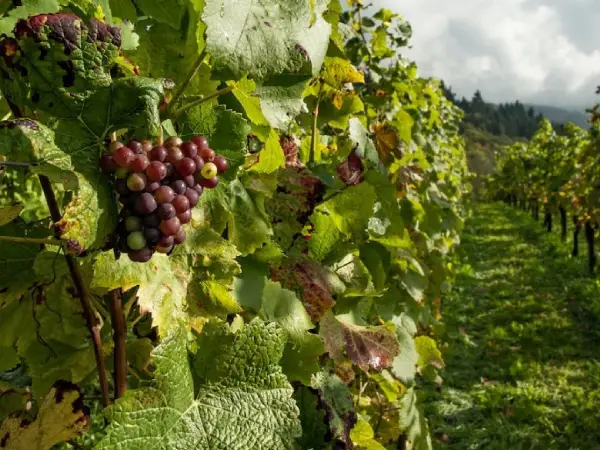
Use Insect Netting to Protect Vineyards
4. The Climate and Weather Conditions
The climate and weather conditions in the region where the greenhouse is located will also impact the selection of anti-insect netting. For example, in areas with hot and humid climates, netting with good ventilation and heat resistance may be necessary. In colder regions, netting with good insulation and frost resistance may be more appropriate. It is also important to consider the potential for wind and other weather events when selecting a netting that will be able to withstand harsh conditions.
5. The Cost and Durability of the Netting
Finally, it is important to consider the cost and durability of the netting when making a selection. While it may be tempting to choose a cheaper option, it is important to consider the long-term costs and benefits of different netting options. If you’re looking to purchase insect netting for personal use, you can find a variety of garden netting options from online retailers like Amazon and eBay. These websites offer a convenient and easy way to shop for insect netting from the comfort of your own home. However, if you operate a large farm, you may want to consider purchasing your insect netting directly from suppliers. These suppliers may be able to offer insect netting at a lower price and in larger quantities, making it a more cost-effective option for your farm.
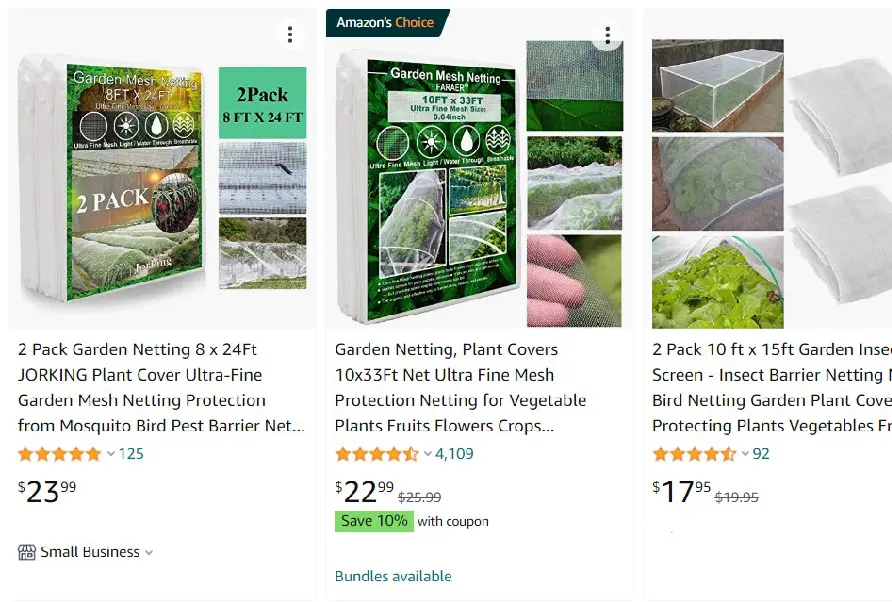
Buy insect netting from Amazon
In general, higher-quality netting will be more durable and may have a longer lifespan, ultimately leading to a lower overall cost. It is also important to consider the maintenance and repair needs of different netting options to ensure that they will be able to provide long-term protection and value.
Conclusion
Anti-insect netting is a valuable tool for maintaining healthy and productive greenhouses. It offers numerous benefits, including pest control, disease prevention, temperature regulation, and shade effect. When selecting an anti-insect netting, it is important to consider the specific needs and circumstances of the greenhouse in question.
This includes the types of pests to be prevented, the size and shape of the greenhouse, the type of crops being grown, the climate and weather conditions, and the cost and durability of the netting. By taking these factors into account, it is possible to choose an anti-insect netting that will provide optimal protection and support for greenhouse cultivation.
